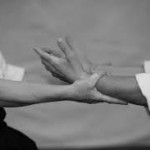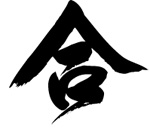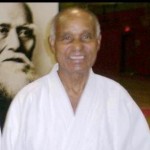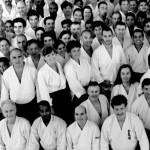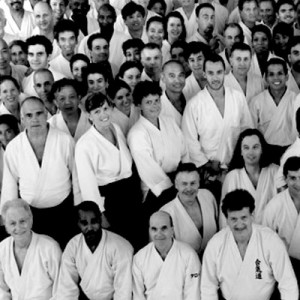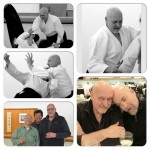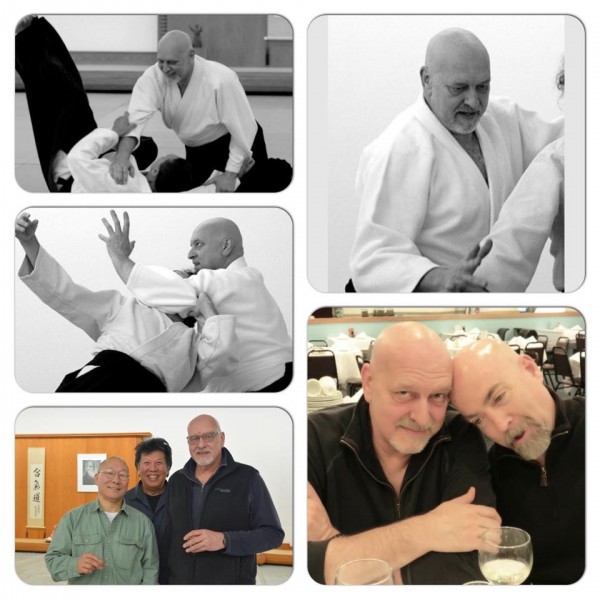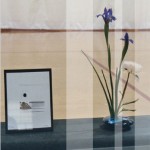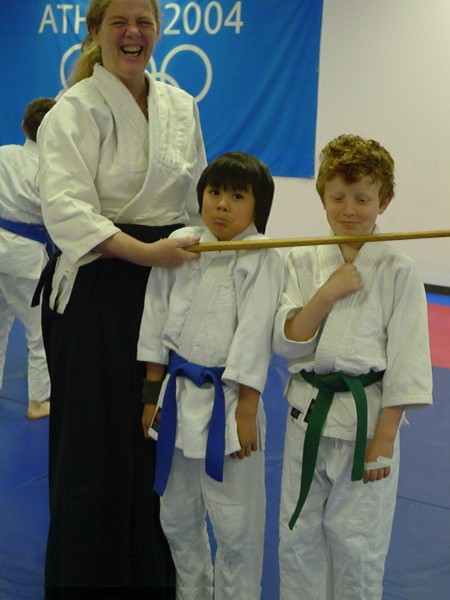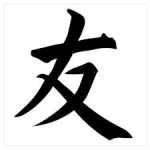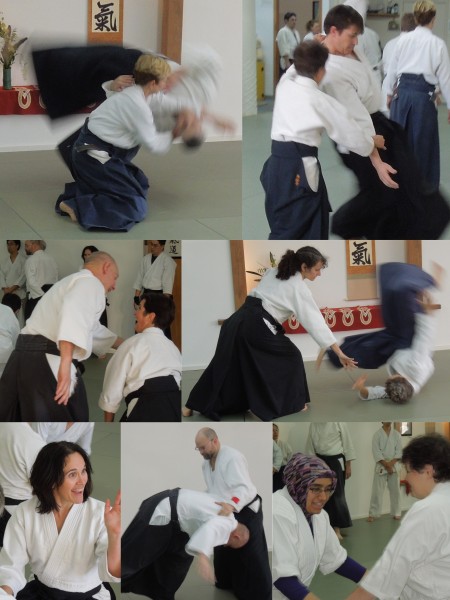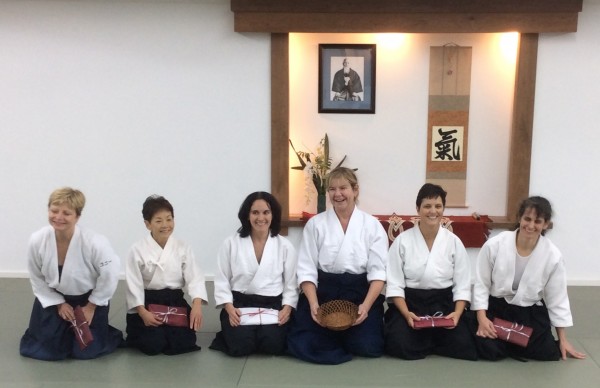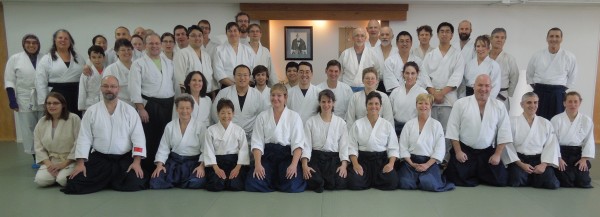 Whenever we experience a particularly effective technique we notice nage’s presence immediately. Like a tidal wave that suddenly appears out of nowhere, it can sweep us off our feet while we look on in awe. Presence can be powerful yet subtle, and become the center of attention without being obnoxious. Many people can be present but lack presence, and it is the difference between practicing Aikido with a limp arm and practicing with an arm full of energy yet still relaxed. When we relax in Aikido it is not the same type of relaxing where you plop down into bed after a long and tiring day. We need to keep relaxed during practice but with an energy and presence that lets whoever we train with know that we are there and in the moment, ready to be engaged. Good presence lets our practice remain in motion like the ebb and flow of the tide, instead of feeling overly static like water trapped in a bottle.
Whenever we experience a particularly effective technique we notice nage’s presence immediately. Like a tidal wave that suddenly appears out of nowhere, it can sweep us off our feet while we look on in awe. Presence can be powerful yet subtle, and become the center of attention without being obnoxious. Many people can be present but lack presence, and it is the difference between practicing Aikido with a limp arm and practicing with an arm full of energy yet still relaxed. When we relax in Aikido it is not the same type of relaxing where you plop down into bed after a long and tiring day. We need to keep relaxed during practice but with an energy and presence that lets whoever we train with know that we are there and in the moment, ready to be engaged. Good presence lets our practice remain in motion like the ebb and flow of the tide, instead of feeling overly static like water trapped in a bottle.
With a diverse array of people come diverse types of presence. People can differ stylistically in their presence, and people may also derive their presence from different sources. Some people have a natural presence, and when they’re in a room everyone notices, while others cultivate it internally to bring out an energy, voice, and authority that had previously been eluding them. One day, several years ago, I saw a person wearing a trench coat stride into the dojo with such a great deal of presence that I was convinced he was a yudansha. Later on, to my surprise, I found out he was 5th kyu. A powerful presence doesn’t always come with rank or skill, but with the ability to project your energy so that the people around you can’t help but notice it. A lot of energy flows in Aikido, and these lines of energy can move in so many different directions, that it can sometimes seem unwieldy. A strong presence can bring order to these paths of energy that can result in freer and uninhibited movement. Our presence places us in charge of guiding the movement instead of letting it drift aimlessly away.
In contrast to the presence emanating from within, are some forms of externally derived presence that have less to do with projecting energy and more to do with something to be avoided. Just like not all types of attention are desirable, there are types of presence that we are better off without. One time I was training with someone who had an extremely sweaty and stinky gi (reminder to all aikidoka: please keep your gis well washed and clean!!), and we were practicing iriminage. As I was taking the ukemi and he was bringing my head towards his shoulder I couldn’t help but notice the dark sweat stains on his gi under his arms, and to avoid having my face squished into that abyss of sweat I took the fall before he technically completed his technique. That type of stinky presence certainly made his iriminage effective; I was made to go down instantly after all. This, however, is not the type of presence that would help us in our training. A presence that repels people is very different than a positive presence that accepts and guides them.
Presence isn’t something strictly technical. It’s more about attitude and how you use it to deal with the energy around you. For those of us with pets, we know they can see it when we assert ourselves and demand their attention and respect. Being energetically assertive doesn’t mean to be arrogant or obnoxious. We can assert authority over a situation while retaining a sense of humility and a respectful demeanor towards others. If nage is doing a technique properly he or she should feel in control. An attack can create a potentially chaotic situation, and neutralizing that attack takes, in addition to the technique itself, an inner sense of stillness and presence that makes you and the attacker feel you are in control of the situation. At more advanced levels of training it is the nage that initiates the technique. Nage becomes perceptive enough to take the lead in resolving the movement by breaking the maai before uke moves in for the attack. By initiating with a strong presence nage is then able to shape uke’s attack in a way that is more efficient to manage. A good attitude doesn’t just make for a more pleasant practice, but also a vibrant presence in performing the techniques.
Both the giant tsunami and the relatively small wave that merely makes us stumble have significant presence. One is more obvious while the other is more subtle, but in the end we acknowledge both of them, since they have entered our perception in a way we cannot ignore. The inner presence derived from overt charisma or a more subtle inner cultivation can make others notice in a definitive way, the same way an assertive hand to the face would make uke definitively notice. Some external types of presence like a strong odor can make people double take, but are not beneficial for a good practice as most people would rather that stay hidden. Good presence calls for an assertive, but not overly aggressive, attitude that can initiate and control the situation at hand. There are moments when we may feel knocked around by the tide as we drift; those are the times where we need to find stable footing, ground and center ourselves, and spark a presence that makes us truly present in life and on the mat.
By Andrew Lee, New York Aikikai
